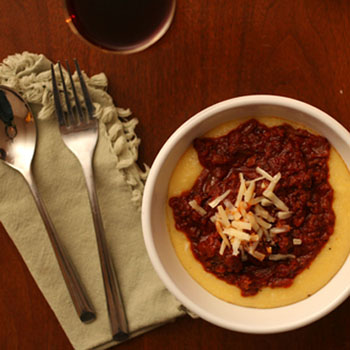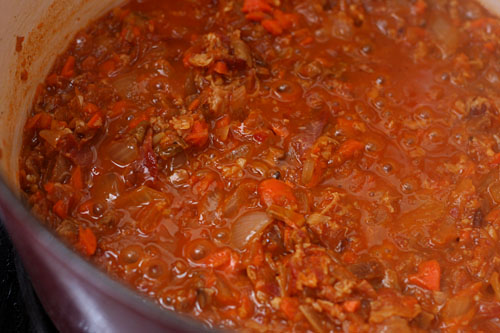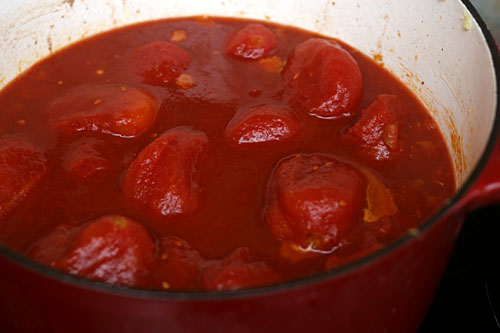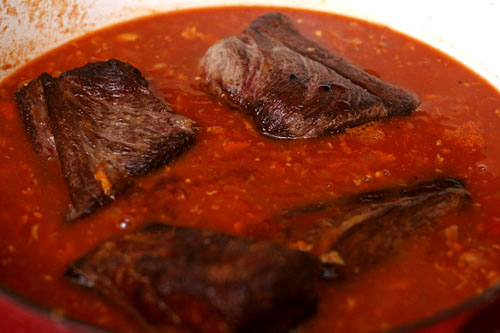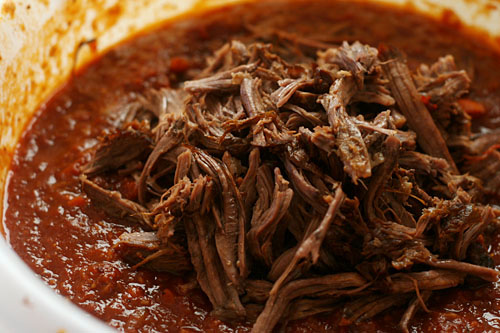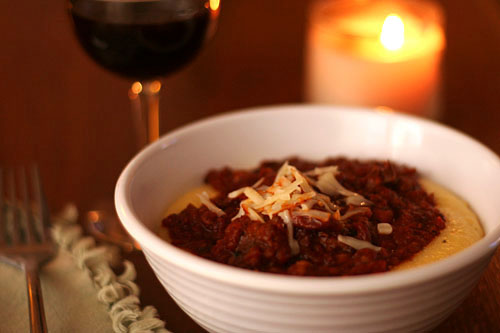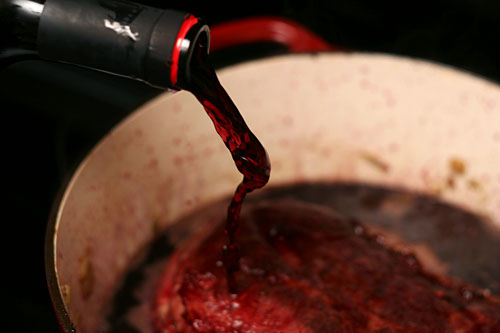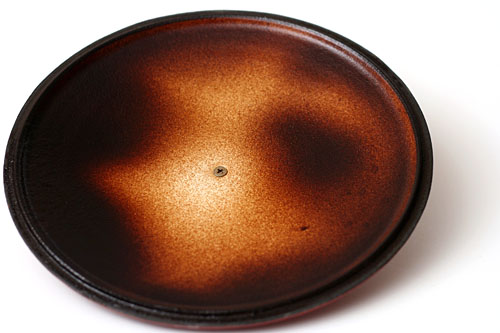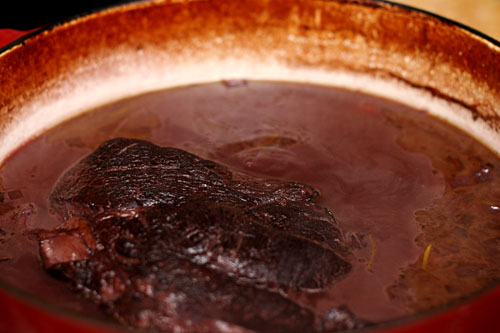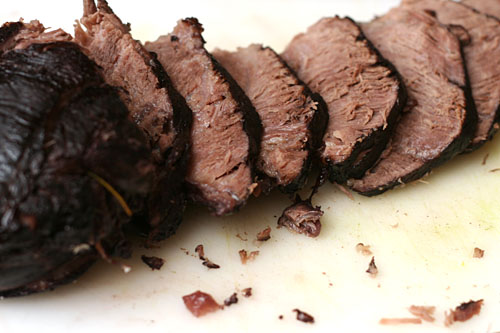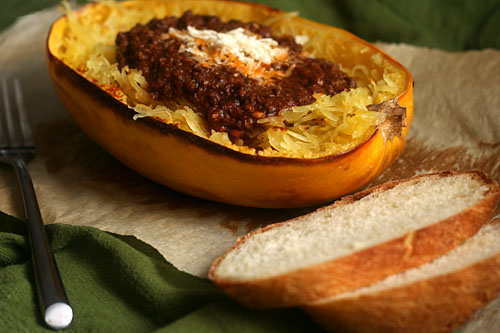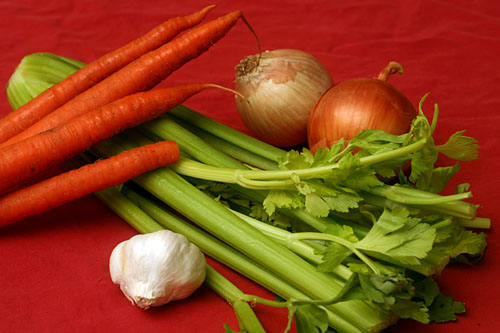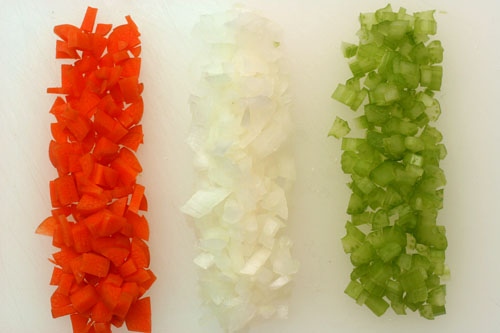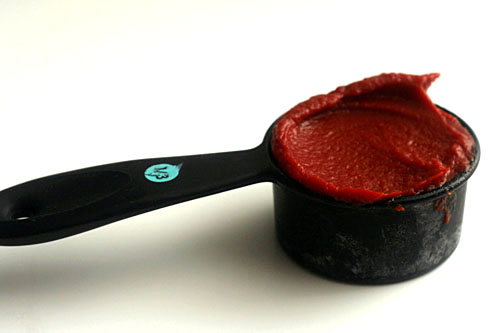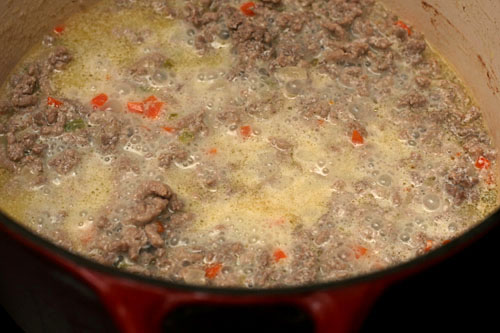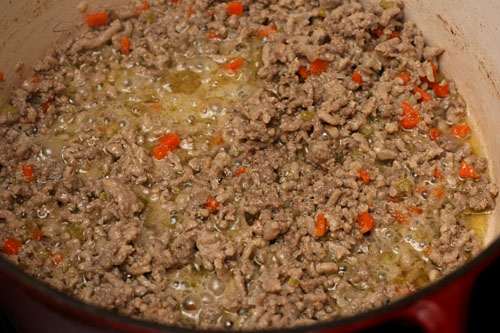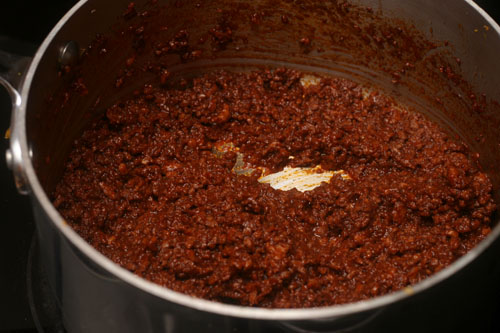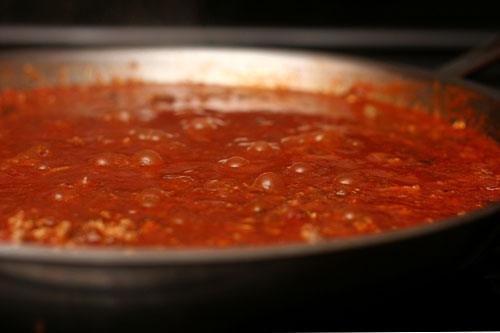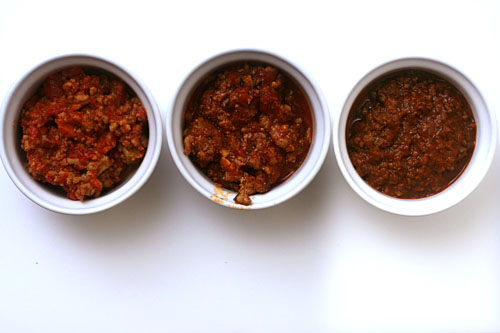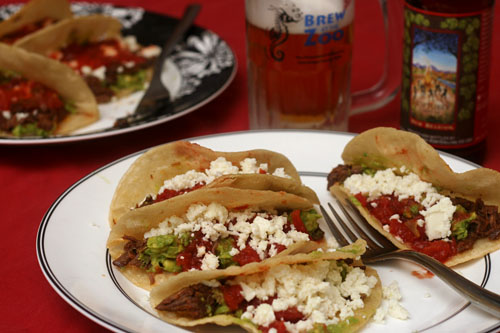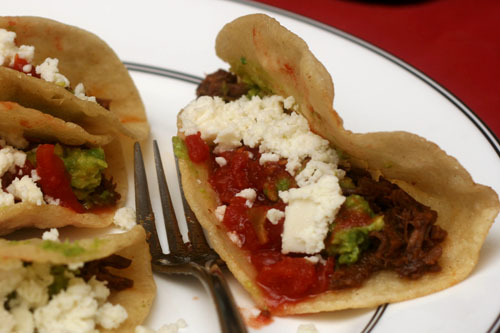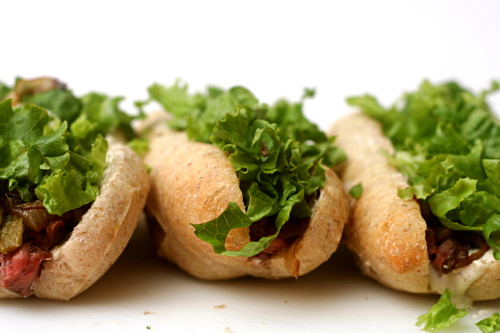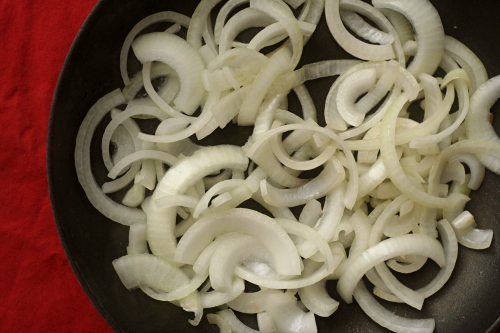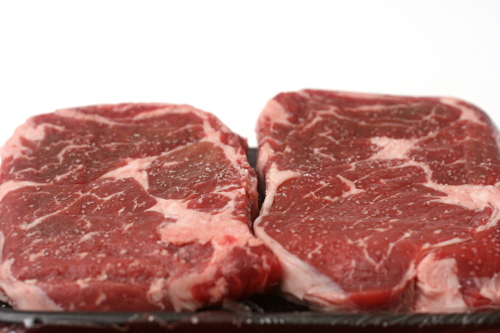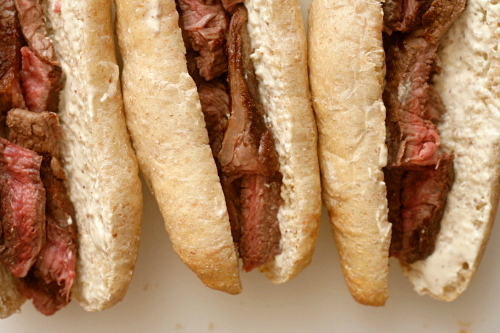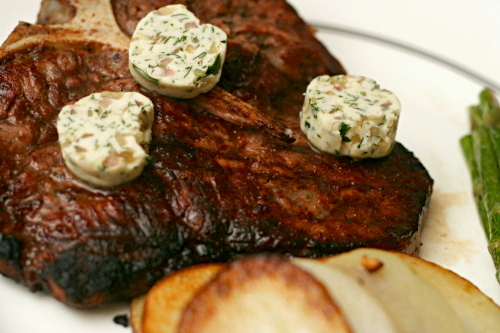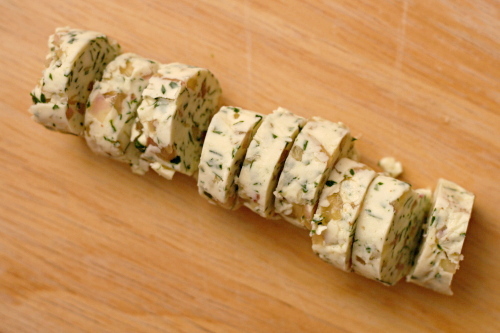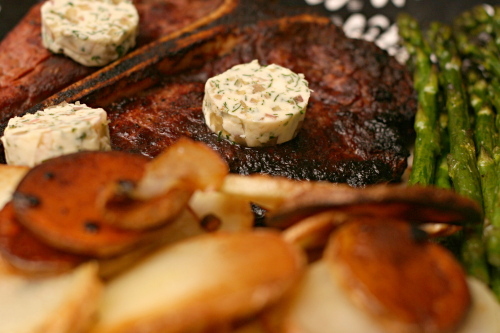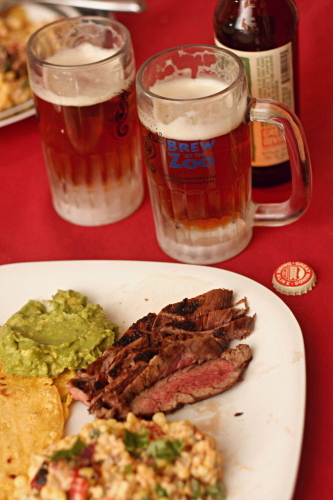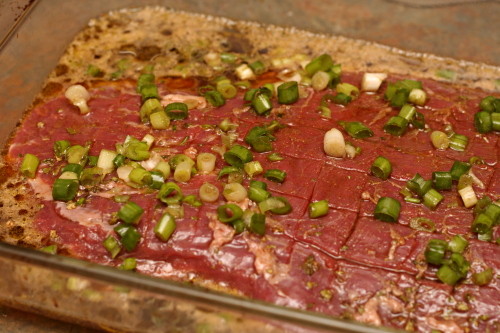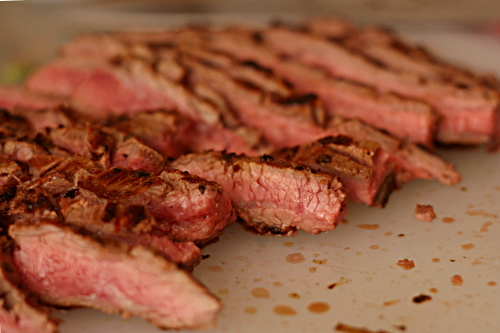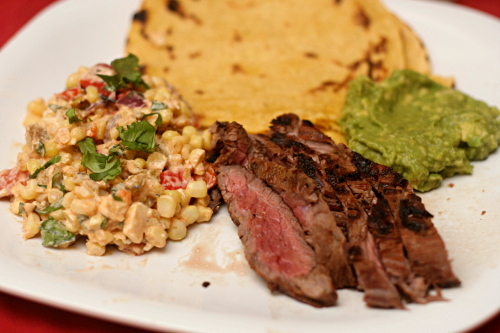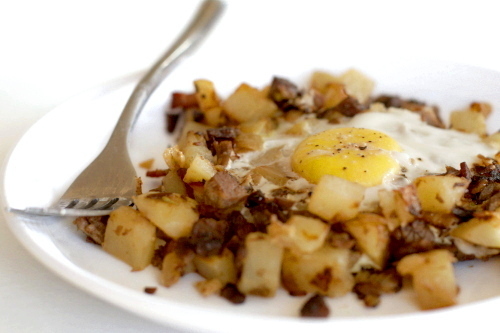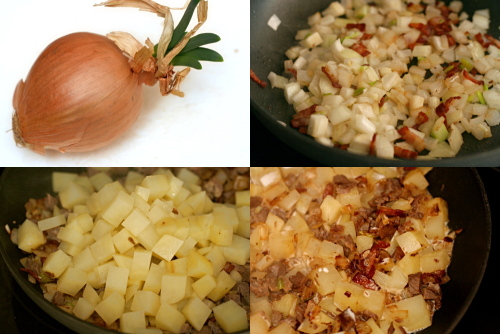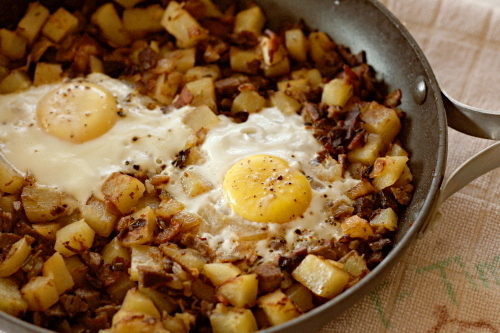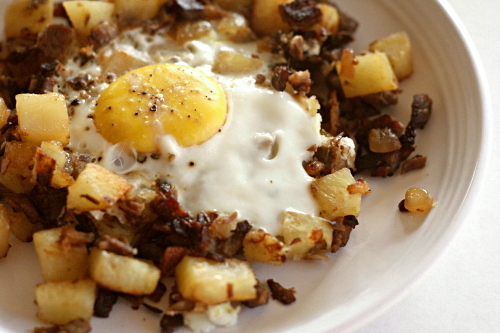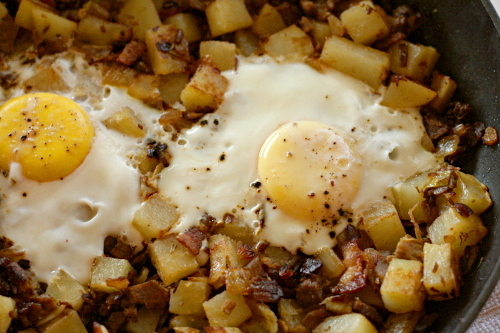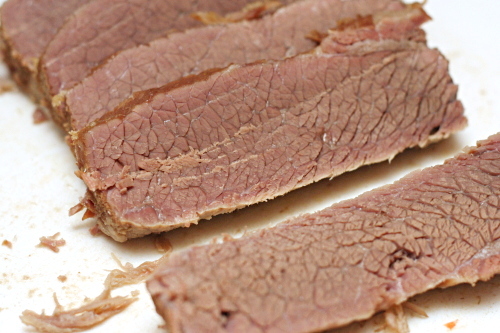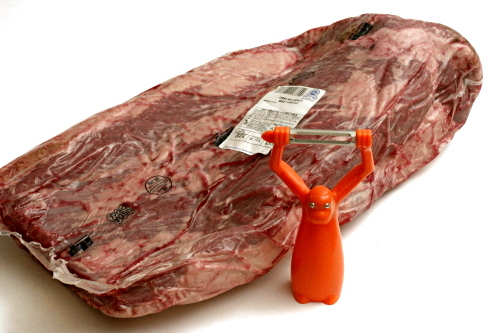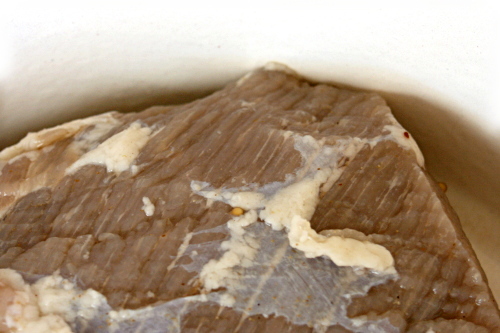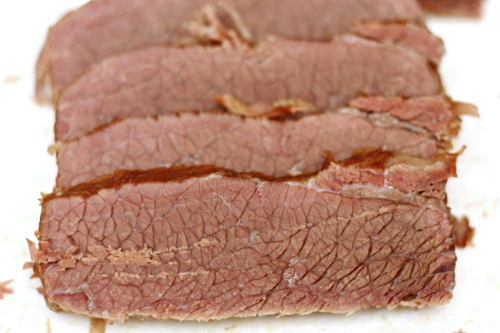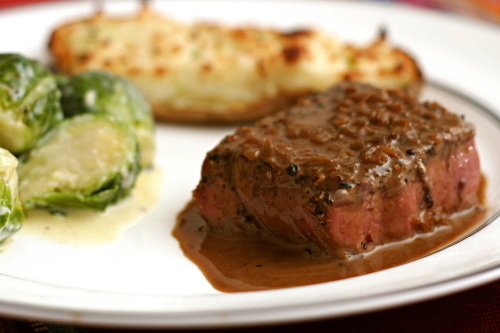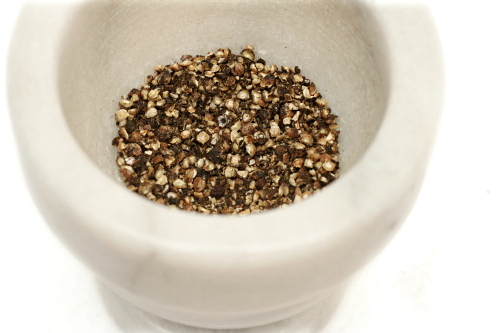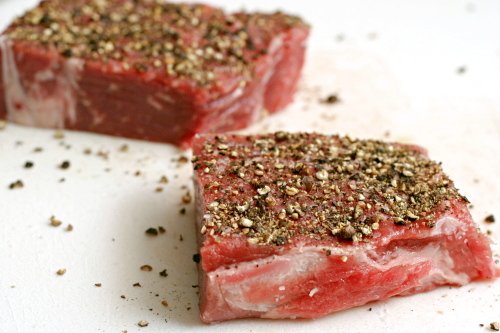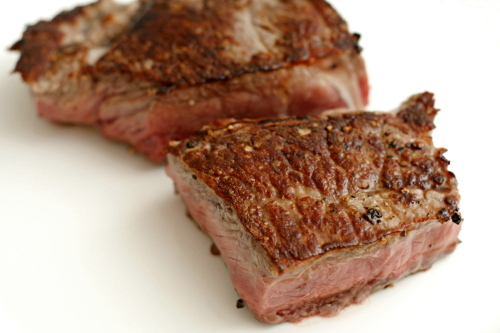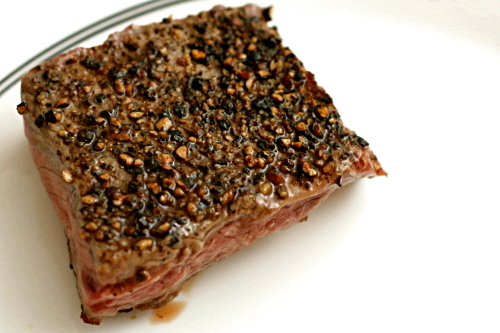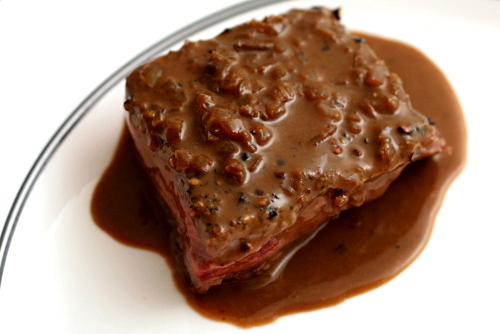When my sister visits with her young kids, I like to make a dish on the first night that’s particularly kid-friendly. While they aren’t picky eaters, they love pizza and spaghetti and hot dogs as much as any other kid. But if I’m cooking, the food has to be Bridget-friendly too. In other words, it has to be fun to cook.
I’ve wanted to perfect a recipe like this for a long time. I had in mind something that wasn’t just tomato sauce with meat added. I wanted the meat to shine, and I wanted the sauce itself to taste distinctly meaty.
To get the intensity I was hoping for, I pulled out every umami trick I know. Beef, obviously, and all the tomatoes don’t hurt. Dried porcini mushrooms, tomato paste (added with the aromatics and browned slightly), and pancetta added layers of meaty flavor.
This is my favorite type of recipe to make. Ingredients are added incrementally, food gets browned and delicious, and all the while, I get to stir and inhale the aroma, stir and inhale. It gets better after the sauce has simmered for hours, and then it becomes stir and taste, stir and taste. Even better is enjoying the meal with pasta, freshly baked bread, salad, a bottle of red wine, and two rambunctious kids and their parents.
One year ago: Lighter Chicken and Dumplings
Two years ago: Chopped Salad
Three years ago: Banana Cream Pie
Printer Friendly Recipe
Beef Short Ribs Braised in Tomato Sauce
½ ounce dried porcini mushrooms
1 teaspoon olive oil
4 (3-4 pounds total) beef short ribs
salt
3 ounces pancetta, diced
1 onion, diced small
1 carrot, diced small
3 garlic cloves, minced
2 tablespoons tomato paste
½ teaspoon oregano
½ cup wine (red or white, just something that isn’t too sweet or oaky)
2 (28-ounce) cans whole tomatoes with their juice
1. Rinse the mushrooms to remove any dirt clinging to them. Cover them with ½ cup water in a small microwave-safe bowl. Cover the bowl with plastic wrap, poke a few holes in the plastic wrap, and microwave on high power for 30 seconds. Let stand until the mushrooms are softened, about 5 minutes. Use a fork to lift the mushrooms from the liquid; mince the mushrooms, reserving the liquid.
2. Season the beef ribs with salt. Meanwhile, in a 5-quart Dutch oven, heat the olive oil over medium-high heat until it flows like water when the pot is tilted. Add the beef ribs and cook, for 2-3 minutes per side, until richly browned on all sides. Remove the ribs from the pot. Lower the heat to medium and add the pancetta to the pot. Cook, stirring occasionally, until the fat is rendered and the pancetta is crisp. Use a slotted spoon to transfer the pancetta to the plate with the short ribs. Drain all but 1 tablespoon fat from the pot. Add the onions and carrots; cook, stirring occasionally, until softened and lightly browned on the edges, 6-8 minutes. Stir in the garlic, tomato paste, mushrooms, and oregano; cook, stirring constantly, until fragrant, about 30 seconds. Pour in the wine; scrape up the browned bits on the bottom of the pot. Stir in the tomatoes, beef ribs, pancetta, mushroom soaking liquid (being careful to leave any dirt behind) and 1 teaspoon salt; bring to a simmer over medium-high heat, then reduce the heat to low, cover the pot, and cook, stirring occasionally, for 2 hours. After 2 hours, remove the cover, increase the heat to medium-low, and simmer for another hour, until the beef is tender.
3. Transfer the ribs to a plate; shred the meat. Meanwhile, if the sauce is too thin, increase the heat to medium-high and simmer until it reaches the desired thickness. Stir the meat back into the sauce. Taste for seasoning, adding salt if necessary, and serve over pasta or polenta.
